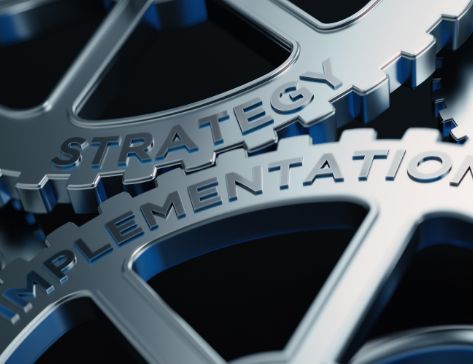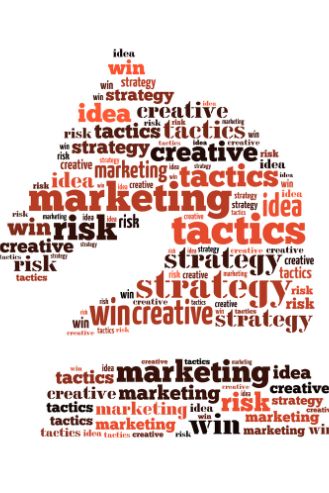
Implementing Next-Best-Action Marketing Strategies: A Comprehensive Data-Driven Guide
Next-best-action marketing represents a paradigm shift in how businesses engage with customers, moving from traditional segment-based campaigns to individualized, context-aware interactions that deliver the right message, offer, or experience at precisely the right moment. This sophisticated approach leverages advanced analytics, machine learning, and real-time decisioning to determine the most appropriate action for each customer based on their unique circumstances, preferences, and behaviors.
In today’s hyper-competitive marketplace, generic marketing messages no longer suffice to capture customer attention and drive meaningful engagement. Modern consumers expect personalized experiences that demonstrate a deep understanding of their needs and preferences. Next-best-action marketing addresses this challenge by analyzing vast amounts of customer data to identify the most relevant and timely interaction for each individual, significantly improving response rates, customer satisfaction, and lifetime value.

Understanding Next-Best-Action Marketing
Next-best-action marketing (NBA) is a customer-centric approach that uses data analytics and decision science to determine the optimal interaction with each customer at any given moment. Unlike traditional marketing approaches that focus on pushing products through predetermined campaign schedules, NBA marketing prioritizes customer needs and context to deliver truly relevant experiences.
The core principles of next-best-action marketing include:
- Customer Centricity: Placing customer needs and preferences at the center of all marketing decisions
- Contextual Relevance: Considering the customer’s current situation, recent interactions, and immediate needs
- Real-Time Decisioning: Making interaction decisions at the moment of engagement rather than through pre-planned campaigns
- Continuous Learning: Constantly refining recommendations based on new data and interaction outcomes
- Omnichannel Consistency: Maintaining coherent customer experiences across all touchpoints
Key Distinction: While traditional marketing asks “What products should we promote to which segments?”, next-best-action marketing asks “What does this specific customer need right now, and how can we best serve that need?”
The Business Case for Next-Best-Action Marketing
Implementing next-best-action marketing delivers significant business benefits across multiple dimensions:
| Benefit | Impact | Typical Results |
|---|---|---|
| Increased Conversion Rates | More relevant offers lead to higher acceptance rates | 20-40% improvement in campaign conversion |
| Enhanced Customer Experience | Interactions feel helpful rather than intrusive | 15-30% increase in customer satisfaction scores |
| Reduced Customer Churn | Proactive addressing of needs before they lead to attrition | 10-25% reduction in customer churn |
| Improved Marketing Efficiency | Resources focused on highest-potential interactions | 15-30% increase in marketing ROI |
| Increased Customer Lifetime Value | More meaningful relationships drive long-term value | 10-20% growth in customer lifetime value |
Organizations across industries have realized substantial returns from next-best-action implementations, with financial services, telecommunications, retail, and healthcare seeing particularly strong results due to their rich customer data and multiple interaction channels.
Building a Next-Best-Action Marketing Framework
Implementing effective next-best-action marketing requires a systematic approach that combines strategic planning, technical infrastructure, and organizational alignment. The following framework provides a comprehensive roadmap for developing NBA capabilities:
Step 1: Define Your Business Objectives and Use Cases
Begin by clearly articulating what you aim to achieve with next-best-action marketing and identifying specific use cases where it can deliver value:
- Identify key customer journeys where personalized interventions could improve outcomes
- Prioritize specific business goals (acquisition, cross-sell, retention, service improvement)
- Define measurable success metrics for each use case
- Start with 2-3 high-impact use cases rather than attempting comprehensive implementation
Example Use Cases: Reducing digital banking abandonment, improving insurance policy renewal rates, increasing retail cross-sell during service interactions
Step 2: Establish Your Data Foundation
Next-best-action marketing depends on comprehensive, high-quality customer data from multiple sources:
- Inventory available customer data across systems (transactions, interactions, preferences, etc.)
- Identify and address critical data gaps
- Implement data integration processes to create unified customer profiles
- Ensure data quality, currency, and accessibility
- Address privacy compliance and data governance requirements
Critical Data Types: Demographic information, transaction history, channel preferences, product ownership, interaction history, behavioral signals, contextual data
Step 3: Develop Your Decision Framework
Create a structured approach for determining the next best action for each customer:
- Define the universe of possible actions (offers, messages, experiences, etc.)
- Establish business rules and constraints for each action
- Develop customer intent models to predict needs and preferences
- Create propensity models to estimate response likelihood
- Implement value models to calculate expected outcomes
- Design arbitration logic to select the optimal action when multiple options exist
Decision Framework Components: Eligibility rules, prioritization logic, channel constraints, contact policies, value calculations, timing considerations
Step 4: Implement Technical Infrastructure
Deploy the technology components needed to execute next-best-action decisions:
- Select appropriate decision engine technology (custom-built or vendor solution)
- Implement real-time data processing capabilities
- Develop APIs and integration points with customer-facing channels
- Create feedback loops to capture interaction outcomes
- Establish monitoring and alerting systems
Key Technology Components: Customer data platform, decision management system, analytics environment, channel integration layer, performance monitoring tools
Step 5: Design Channel-Specific Execution
Adapt next-best-action delivery for each customer touchpoint:
- Map customer journeys across channels to identify decision points
- Develop channel-specific presentation strategies
- Create content variants for different contexts and formats
- Implement real-time decisioning in digital channels
- Provide guided next-best-action recommendations for human agents
Channel Considerations: Digital (web, mobile, email), contact center, in-person, paid media, outbound communications
Step 6: Establish Measurement and Optimization Processes
Create systems to continuously evaluate and improve next-best-action performance:
- Implement A/B and multivariate testing capabilities
- Develop performance dashboards for key metrics
- Create model monitoring and retraining processes
- Establish regular review cycles for business rules and constraints
- Implement continuous learning and optimization loops
Key Metrics: Offer acceptance rates, customer satisfaction, incremental value generated, model accuracy, channel performance
Advanced Next-Best-Action Techniques
Contextual Awareness
Enhance next-best-action relevance by incorporating situational context:
- Location-Based Context: Adapt recommendations based on customer’s physical location
- Journey Stage Context: Align actions with the customer’s position in specific journeys
- Device Context: Optimize experiences for the specific device being used
- Time-Based Context: Consider time of day, day of week, and seasonal factors
- Emotional Context: Detect and respond to customer sentiment and emotional state
Reinforcement Learning
Apply advanced machine learning techniques that continuously optimize actions based on outcomes:
- Implement multi-armed bandit algorithms to balance exploration and exploitation
- Develop reinforcement learning models that optimize for long-term value
- Create adaptive models that respond to changing customer preferences
- Implement automated experimentation frameworks
Explainable AI for Next-Best-Action
Ensure that next-best-action decisions can be understood and trusted:
- Implement model explainability techniques to understand recommendation drivers
- Create transparent decision logic that can be audited and validated
- Develop human-readable explanations for customer-facing staff
- Establish ethical guidelines for automated decision-making
Common Challenges and Solutions
Challenge: Data Silos and Integration Issues
Solution: Implement a customer data platform that unifies information across sources, prioritize high-value data integration first, and use API-based architecture to connect systems incrementally.
Challenge: Organizational Resistance
Solution: Start with pilot projects that demonstrate clear value, involve stakeholders early in the process, provide comprehensive training, and create incentives aligned with NBA adoption.
Challenge: Content Creation Bottlenecks
Solution: Implement modular content strategies, develop content templates that can be dynamically personalized, and use AI-assisted content generation for scale.
Challenge: Balancing Automation and Human Judgment
Solution: Create hybrid models where algorithms suggest actions but humans maintain oversight, implement confidence scoring for recommendations, and establish clear escalation paths.
Implementation Roadmap
A phased approach to next-best-action marketing implementation typically follows this progression:
- Foundation Phase (3-6 months): Establish data infrastructure, develop initial use cases, implement basic decision rules
- Expansion Phase (6-12 months): Add predictive models, expand to additional channels, implement real-time capabilities
- Optimization Phase (12-18 months): Implement advanced analytics, expand to full customer lifecycle, develop closed-loop optimization
- Transformation Phase (18+ months): Achieve omnichannel orchestration, implement AI-driven personalization, develop fully adaptive experiences
Organizations should expect to see initial results within 3-6 months, with significant business impact emerging as capabilities mature over 12-18 months.
Conclusion
Next-best-action marketing represents the future of customer engagement—moving beyond traditional campaign-centric approaches to deliver truly personalized, contextually relevant experiences at scale. By systematically implementing the framework outlined in this guide, organizations can transform their customer interactions from generic broadcasts to meaningful conversations that deliver value to both the business and its customers.
The journey to next-best-action marketing maturity requires investment in data, technology, and organizational capabilities, but the returns in terms of customer satisfaction, loyalty, and lifetime value are substantial. As customer expectations continue to rise and digital marketing platforms evolve, next-best-action capabilities will increasingly become a competitive necessity rather than a differentiator. Organizations that begin building these capabilities today will be well-positioned to thrive in the customer-centric future of marketing.
Key Takeaway: Next-best-action marketing transforms customer engagement from product-centric campaigns to customer-centric conversations. By leveraging data, analytics, and real-time decisioning, organizations can deliver experiences that feel remarkably personal and relevant, driving significant improvements in both customer satisfaction and business outcomes.


